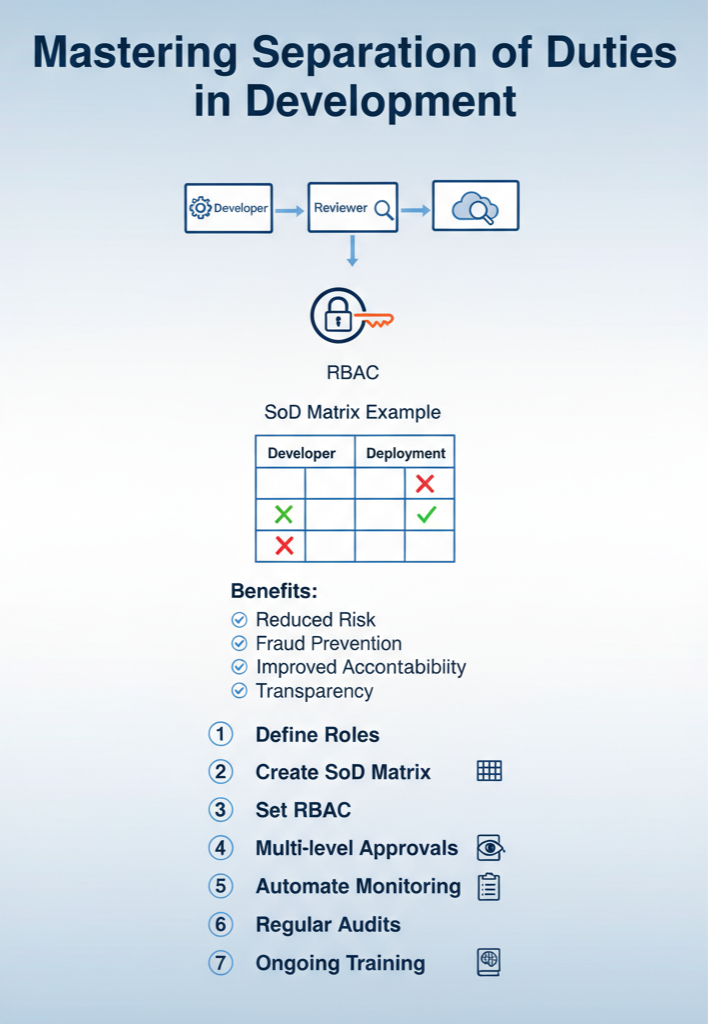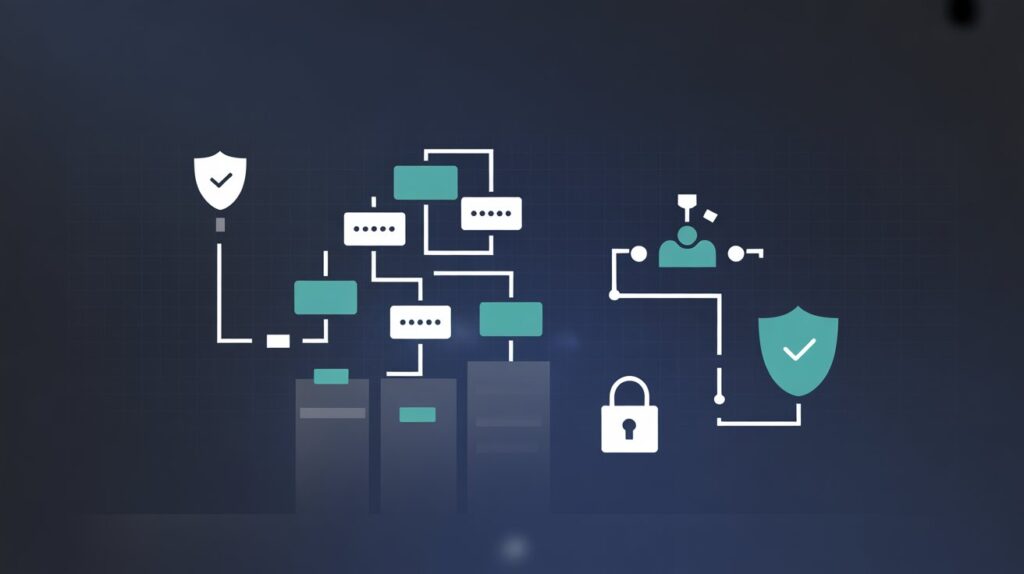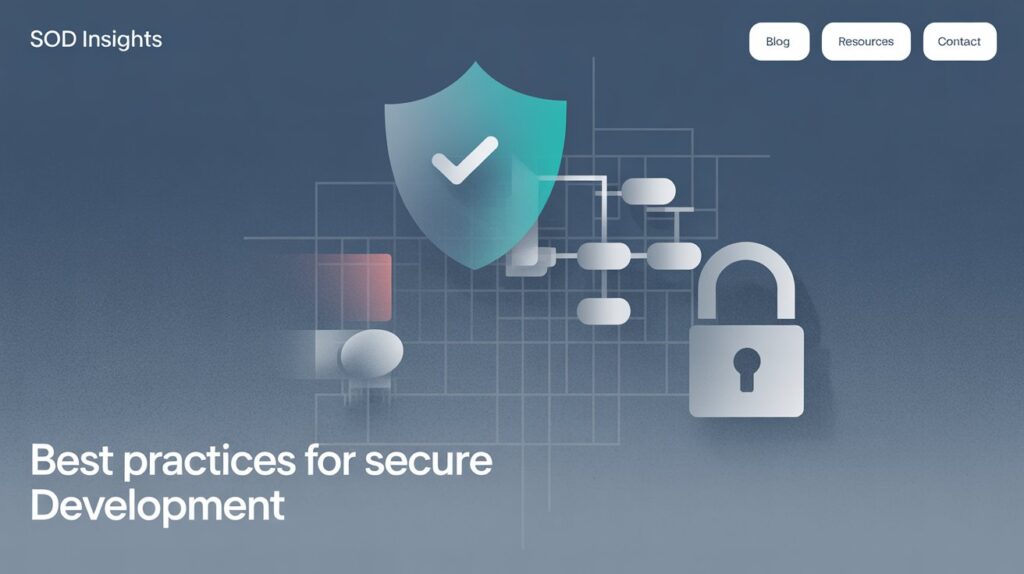
Speed and security often clash in software development. Teams might not like hearing this, but Separation of Duties (SoD) isn’t just a fancy phrase. It’s like having several checkpoints where different people do different jobs. The idea is simple: two heads are better than one.
This helps stop mistakes and cheating. Yes, it can slow things down a bit, but SoD creates a clear record that can save a company’s reputation if something goes wrong. For teams trying to release fast but stay safe, understanding SoD is no longer optional. It’s just part of the work.
Key Takeaways
- Development tasks get split between different people so nobody has too much control over the whole process.
- Every person involved needs their own login, specific access levels, and leaves a record of what they touched.
- Regular checkups and many approval layers keep everything legal while making sure nobody’s doing anything shady.
Separation of Duties in Development: Core Principles
Separation of Duties isn’t just a buzzword tossed around in security circles. It’s a straightforward concept with solid roots in risk management. At its core, SoD means assigning different parts of a process, especially sensitive ones, to different people.
This aligns with foundational security principles, ensuring no single individual has the power to both create and approve changes without oversight. It’s like having a built-in watchdog in your development lifecycle.
The main idea is simple: split responsibilities to reduce the chance of fraud, errors, or unauthorized actions. This approach limits the risk of a single person manipulating the system without detection. “When a developer writes code, a different person reviews it. This split in duties helps catch problems early and keeps the code safer , especially knowing that 83% of organizations reported at least one insider attack in the past year [1].”
Accountability gets a lot clearer with Separation of Duties (SoD). Every action leaves a trace, like footprints in the sand. These audit trails help companies see who did what, and when. That makes it easier to catch anything fishy,or just spot honest mistakes before they turn into big problems.
This kind of transparency isn’t just good for the company’s own checks; it’s also crucial for outside audits. For businesses that have to follow rules like Sarbanes Oxley (SOX), these records are a must. Without them, proving you did things right gets much harder, and that can cost a lot.
So, SoD isn’t just about security,it’s about keeping things clear and honest. Separation of Duties breaks down development roles to:
- Prevent any one person from controlling the full process.
- Provide clear audit trails and accountability.
- Reduce operational risks and insider threats.
SoD Implementation in Software Development Lifecycle

What does Separation of Duties (SoD) really look like in software development? It means splitting up important jobs throughout the development process so no one person has too much control. This helps stop conflicts of interest and keeps unauthorized changes from sneaking in.
For example, the person writing code isn’t the same one who approves or deploys it. By dividing these roles, teams reduce the chance of mistakes or bad actions going unnoticed. It’s a simple way to keep things honest and secure, making sure every step gets checked by someone else along the way.
First, there’s code development. Developers write and change the source code, that’s their job. But they don’t get to approve their own work without a second look. That’s where code review steps in. Another group, usually senior developers or special reviewers, double-checks the changes, similar to how structured SoD examples in IT environments ensure no single person controls every step.
They look for bugs, security holes, or anything that breaks the rules. This split in duties helps catch problems early and keeps the code safer. It’s like having a fresh pair of eyes to spot what the original writer might’ve missed. This back-and-forth naturally supports better separation duties controls.
Deployment management is another key step. The people who put code into production aren’t the same ones who write or check it. This keeps deployment safe and under control. Usually, Operations or DevOps teams take care of this. They make sure the right steps are followed and only the right people can access the systems.
This split helps prevent mistakes or bad actors from pushing harmful code live. It also means if something goes wrong, it’s easier to find out where things slipped. Keeping these roles separate adds a strong layer of security to the whole process.
Access control ties it all together. Role-based permissions limit who can enter development, testing, and production environments. Unauthorized changes make it into production, which is why many teams reinforce their controls with least privilege security examples that restrict unnecessary access and highlight proper enforcement in real-world scenarios.
Each of these roles plays a part in reducing risks by creating checks and balances throughout the software delivery process.
Turning SoD into a Living Practice
Source: PM4NGOs
Following these best practices turns SoD from a concept into a living part of your development culture. When everyone understands their roles, the processes are documented, and regular audits are conducted, the organization sets itself up for success.
SoD is not just a set of rules; it’s about creating an environment where everyone feels responsible for maintaining security. When each team member knows their role and the importance of their contributions, they become active participants in protecting the organization.
Incorporating separation of duties into the daily routine of software development is not just beneficial; it’s essential. By putting these practices into place, organizations can significantly reduce the risk of fraud, errors, and unauthorized actions, creating a safer and more efficient work environment.
Integrating Separation of Duties with Risk Management Frameworks. Separation of duties is no standalone fix. It fits within broader risk management efforts by targeting specific security risks like insider threats and unauthorized access.
Identifying these risks first helps tailor SoD controls where they’re needed most. For example, in financial transactions, spotting who can start versus who can approve payments is critical. In software development, preventing a single person from making and deploying code changes without review is key.
Compensating controls come into play when full segregation isn’t workable,say, in smaller teams. Automated monitoring tools can detect policy violations and flag suspicious activities for investigation. Multi-level approvals add another layer, requiring more than one person to allow sensitive changes.
This reduces the chance of error or fraud slipping through unnoticed. By integrating SoD with risk management frameworks, organizations build a stronger defense that not only reduces the risk of fraud but also supports regulatory compliance and governance.
Policies and Controls to Enforce Separation of Duties

Having the right policies makes all the difference in turning SoD principles into practice. Organizations need clear, written rules that spell out who does what, and who can’t do what. Defining incompatible duties upfront helps prevent conflicts of interest before they arise. These rules often resemble the structured steps used when implementing SoD across development and operational workflows.
Role-Based Access Control (RBAC) enforces the principle of least privilege. Users get only the access they need to perform their specific tasks, no more. This limits opportunity for abuse or accidental damage.
When changes are sensitive or risky, teams don’t just say yes and move on. Instead, they use multi-level approvals. This layered approval process reinforces stronger SoD implementation, making sure nothing dangerous or wrong slips through.
This slows things down, sure, but it also cuts down on mistakes and fraud. It’s like having a safety net with many layers. The more eyes on a change, the harder it is for problems to hide. For companies dealing with important data or strict rules, this extra caution can save a lot of trouble later on.
Audit trails and monitoring tools are essential. They produce logs of every action and alert teams if policies are broken. This real-time oversight helps catch issues early and supports internal and external audits.
To enforce SoD effectively, organizations should:
- Maintain audit trails and continuous monitoring.
- Define clear roles and incompatible duties.
- Install RBAC for least necessary access.
- Must multi-level approvals for critical changes.
Practical Tips for Implementing Separation of Duties
You might be wondering where to start. Here are some straightforward steps that can help embed SoD in your development process.
- Map out all roles and tasks. Understand who does what in your software lifecycle.
- Create a SoD matrix. Identify which duties should never be combined.
- Set up RBAC. Limit access strictly to what each role requires.
- Install multi-level approvals. Especially for sensitive changes or deployments.
- Automate monitoring. Use tools that alert you to unusual permissions or actions.
- Schedule regular reviews and audits. Keep your controls current and effective.
- Train your teams regularly. Make sure everyone knows why SoD matters.
By following these steps, you build a system that’s resilient to fraud, errors, and security breaches.
Benefits and Security Outcomes of SoD in Development

Separating duties isn’t just about following rules. It actually brings real benefits that make security stronger and help companies stay on the right side of the law. By splitting tasks, it’s easier to catch errors and stop bad actions before they cause damage. This clear division also makes audits smoother and builds trust inside and outside the company. In the end, it’s a simple step that can save a lot of headaches and protect a business’s reputation. So, it’s not just paperwork,it’s a practical way to keep things running safely.
First, SoD reduces the risk of fraud. When no single individual can control the entire process, it’s much harder to manipulate outcomes for personal gain. Insider threats drop because collusion becomes more difficult and risky.
“Errors get caught earlier, too. Many layers of review and approval boost accuracy and quality. This means fewer bugs, security flaws, or unauthorized changes make it into production , which is key when fraud costs organizations about 5% of their annual revenue [2].”
When it comes to following the rules, Separation of Duties (SoD) helps companies stick to laws like SOX or PCI DSS. These rules need strong internal controls and clear task separation to keep financial and sensitive data safe. SoD makes it easier for organizations to meet these demands without guesswork. It’s like having a checklist that shows you’re doing things right.
Without it, companies risk fines or worse. So, SoD isn’t just about security,it’s about staying legal and avoiding trouble. For businesses handling money or private info, this kind of control is a must-have. Operational transparency gets better, too. Everyone knows what they’re supposed to do, and audit trails keep a clear record of every action.
This kind of visibility helps build trust with stakeholders,people who care about how the company runs. It also makes audits less stressful, since companies don’t have to rush around proving they followed the rules.
When roles are clear and records are easy to find, it’s simpler to spot problems early and fix them. That kind of openness isn’t just good for business,it helps keep everything running smooth and honest over time.
Advanced SoD Practices and Tools in Development Environments
Sometimes full segregation isn’t practical,especially in smaller teams or fast-paced environments. That’s where compensating controls come into play. These might include enhanced monitoring, dual controls on certain actions, or extra oversight to balance the risk.
Automation helps a lot here. Modern tools can enforce access policies automatically, preventing unauthorized actions before they happen. They also provide detailed logs and alerts that human reviewers might miss.
Integrating SoD controls with broader business processes ensures consistency across the organization. Mapping roles and duties to actual business functions means SoD isn’t just a checkbox but a living part of operations.
Regular audits and ongoing training keep SoD practices sharp. Risks change, teams evolve, and technologies update, so continuous improvement is key to staying secure.
FAQ
How does separation of duties in development help reduce risks?
Separation of duties and segregation of duties act as a safety net by ensuring that no single person or single individual has full control over critical tasks. With a sod matrix or sod matrices in place, teams can apply internal controls and access control to minimize risk.
This structure reduces the risk of fraud, prevents unauthorized actions, and limits insider threats. By spreading duties control across organizational roles, development teams can identify security risks early, reduce the risk of reputational damage, and protect the business process from security breaches.
What role do audit trails and sod policies play in preventing fraud?
Audit trails and sod policies are essential best practices for preventing fraud in software development. They track financial transactions, unauthorized changes, and unauthorized actions while assigning responsibility to specific organizational roles.
When combined with access management and internal control, they strengthen regulatory compliance and risk management. Implementing sod also prevents incompatible duties from being assigned, which reduces the risk of fraud and reputational damage.
Strong internal controls, compensating controls, and segregation of duties control further support the business process and hold development teams accountable.
Why is implementing separation of duties critical in software development?
Implementing separation of duties in software development is critical because it reduces the risk of security breaches, fraud, and reputational damage. By applying sod policies, sod matrices, and access control, teams can prevent unauthorized changes and detect insider threats.
Regulatory compliance requirements, such as sarbanes oxley, often mandate internal controls and duties control. This ensures that incompatible duties are not assigned to a single person.
Implementing separation of duties and segregation of duties control allows organizations to minimize risk, improve risk management, and protect financial transactions across the business process.
How do compensating controls support separation of duty in practice?
Compensating controls provide a safety net when full separation of duty cannot be achieved. In many business process workflows, a single individual may need to handle multiple tasks, which increases security risks.
By applying sod matrices, audit trails, and segregation of duties, organizations can reduce the risk of insider threats and unauthorized changes. These controls enforce best practices for duties control, access management, and regulatory compliance.
When implemented effectively, compensating controls protect financial transactions, strengthen software development security, and reduce reputational damage from security breaches.
Conclusion
Separation of duties isn’t just a compliance step,it’s a practical way to reduce fraud, errors, and unauthorized actions by dividing tasks among different people. Clear roles, strict access, and regular reviews cut risks and boost trust in your software.
Start small, keep policies simple, and build SoD into daily development. For hands-on training that covers OWASP Top 10, secure coding, and more, check out the Secure Coding Practices Bootcamp.
References
- https://www.ibm.com/think/insights/83-percent-organizations-reported-insider-threats-2024
- https://www.getfocal.ai/blog/fraud-risk-management

